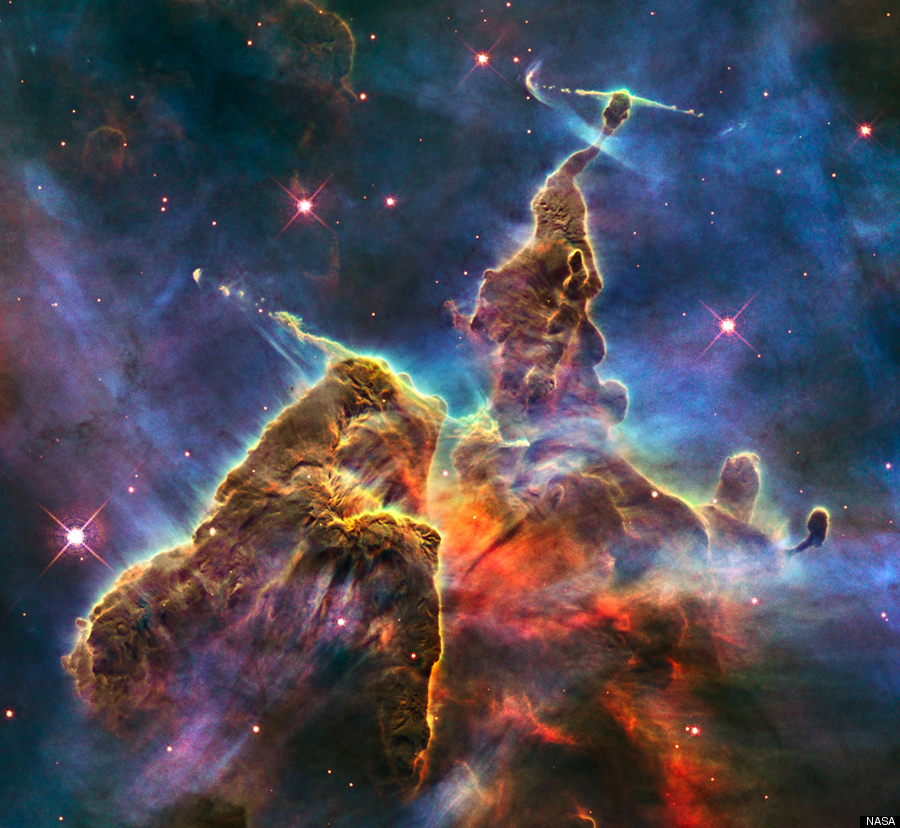Astronomers using the Hubble Space Telescope report an incredibly lucky sighting of a young star-forming galaxy. The alignment of the normal galaxy and the distant galaxy had to be nearly perfect in order to create the gravitational lensing observed by the astronomers.
Gravitational lensing, first predicted by Albert Einstein, states that light from one galaxy will be bent, or distorted, by gravity. In this case, the light from the young “starburst dwarf” galaxy is being distorted as it passes by a nearer galaxy. The first gravitational lens was discovered in 1979, confirming Einstein’s earlier theory, and giving researchers a valuable tool to observe galaxies, the effect of gravity and, indirectly, dark matter.

Photo Released in 2010 in celebration of Hubble’s 20th Anniversary
The photo captured by Hubble reveals an “Einstein Ring,” described as a “a perfect circle of light that is the projected and greatly magnified image of the distant light source.” In the image, the nearer galaxy is in the center while the projected light forms a ring around it, an extremely rare phenomenon according to the researchers. Gravitational lensing is useful to astronomers as it allows for the measurement of a galaxy’s mass as well as dark matter, which does not emit light but can be measured by its gravitational effects, such as the distortion of galaxies.
While the gravitational lens may have been “lucky” and helped astronomers to test current methods used to measure the mass of galaxies, it has led to some new questions. According to the researchers, the chances of a starburst dwarf galaxy being gravitationally lensed should be a rare phenomenon, but it is the second such galaxy to have been observed by this method.
The researchers are looking into the possibility that starburst dwarf galaxies in the early universe may be more common than previously believed, but that will require further observation. “This has been a weird and interesting discovery. It was a completely serendipitous find, but it has the potential to start a new chapter in our description of galaxy evolution in the early Universe,” said van der Wel in a statement.
Jellyfish Orbiting Earth: There’s Something Kind of Lovecraftian/Del Toro-ish About This
Since the early 1990s, we humans have been doing something both odd and eminently sensible: We’ve been launching jellyfish into space. And we have been doing so for science. During NASA’s first Spacelab Life Sciences (SLS-1) missionin 1991, NASA began conducting an experiment: “The Effects of Microgravity-Induced Weightlessness on Aurelia Ephyra Differentiation and Statolith Synthesis.” To carry it out, the space shuttle Columbia launched into space a payload of 2,478 jellyfish polyps—creatures contained within flasks and bags that were filled with artificial seawater. Astronauts injected chemicals into those bags that would induce the polyps to swim freely (and, ultimately, reproduce). Over the course of the mission, the creatures proliferated: By mission’s close, there were some 60,000 jellies orbiting Earth.
The point of all this, as the experiment’s title (sort of) suggests, was to test microgravity’s effects on jellyfish as they develop from polyp to medusa. And the point of that, in turn, was to test how the jellyfish would respond when they were back on Earth. Jellyfish, foreign to us in so many ways, are like humans in one very particular manner: They orient themselves according to gravity.

How did it pan out for space-born space-jellies? Not too well:
Basically, the invertebrates had vertigo. (Or, as PopSci puts it: “As cool as being an astronaut baby sounds, the jellies didn’t develop the same gravity-sensing capabilities as their Earthly relatives.”) Which may not bode well for the vertebrate organisms that may be born in microgravity—space-faring humans among them.


Recent Comments